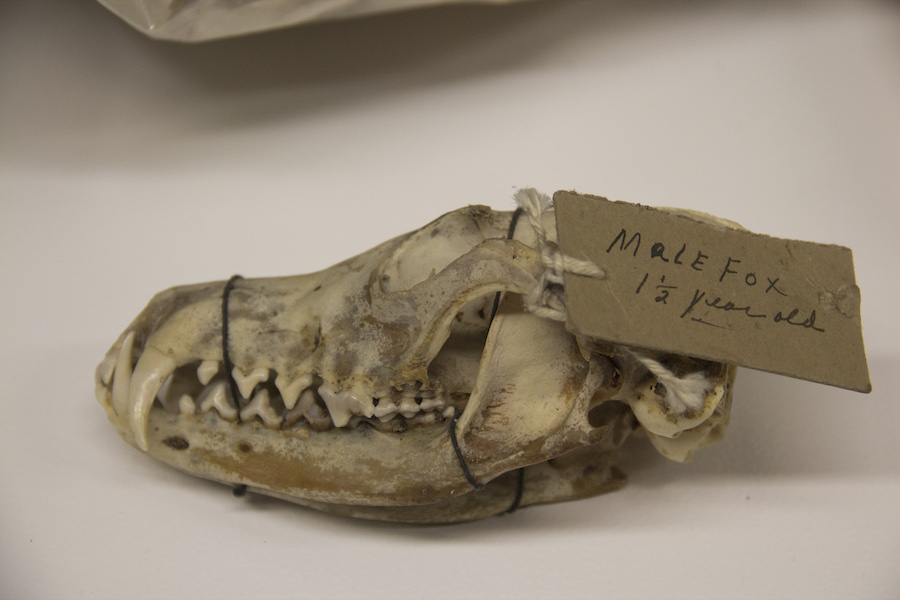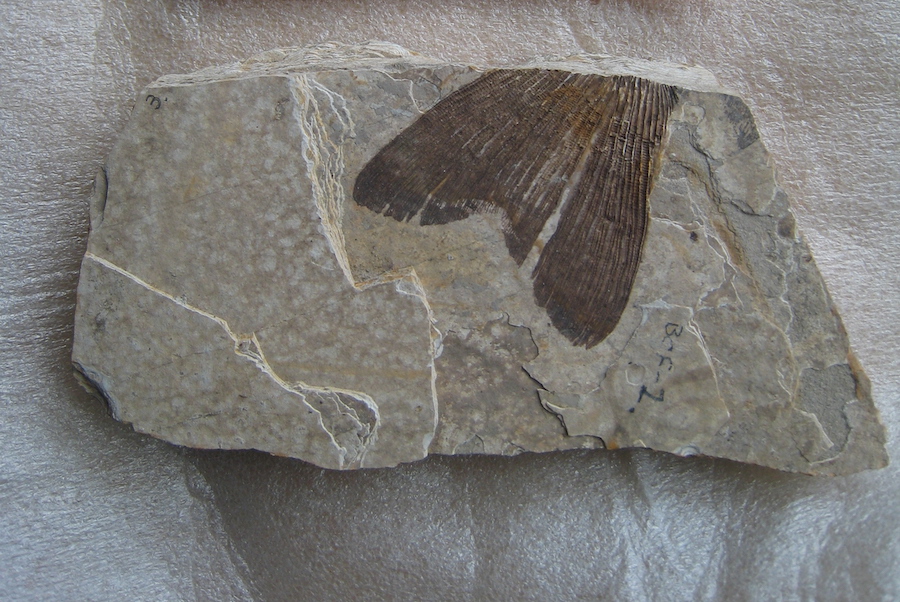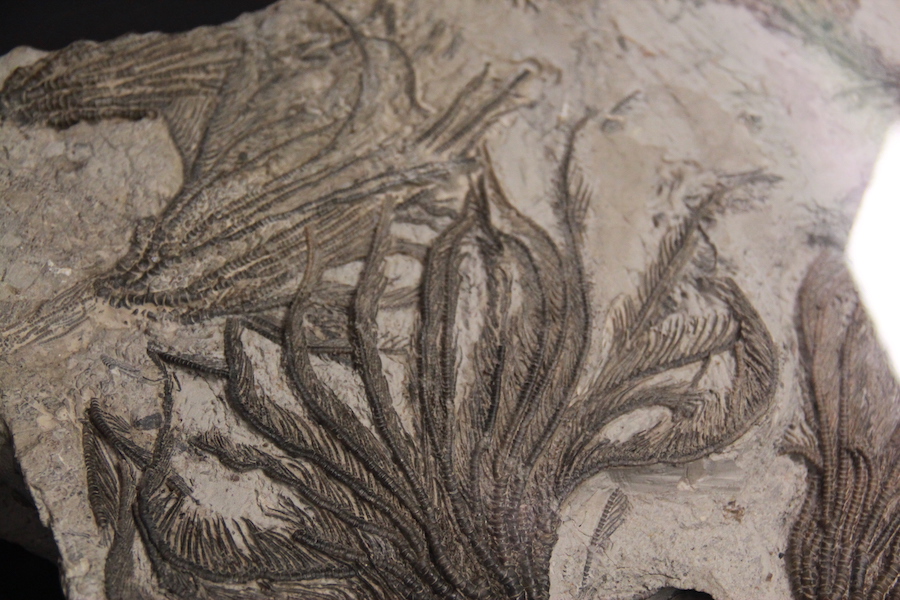Tap or click on the audio icons on the map to explore our exhibits. More information about our collections can be found below.
If you would like to play the audio for a specific collection, please click on an icon above.
Hello and welcome to the Beaty Biodiversity Museum. My name is Nicole Balsdon, and I am the Education and Outreach Coordinator at the Beaty. Thank you for downloading the audio tour of the museum. If you have questions at any point during the tour, pause the recording and find a volunteer or staff member in a red vest. If you haven’t already, please check in at our admissions desk.
On this tour, you’ll learn about each of our six main collections. Between each stop, pause the recording and explore! Please use your headphones while you listen, or read the transcripts on our website atbeatymuseum.ubc.ca/audiotour.
The Beaty Biodiversity Museum is a Natural History museum, but a bit different than the ones you might be used to. All of our specimens – over two million – are stored and displayed in the same place. The museum functions similar to a library; things that are more closely related to each other are generally closer together in the collections. Keep this in mind as you explore the museum; you wouldn’t expect to read every single book in a library, so don’t feel pressure to look at every single specimen on display. Let your interest guide you.
Researchers and curators actively use the specimens in our collection to study ecology, taxonomy, and evolution. The University of British Columbia housed these collections for research well before the museum was built. Conceived in 1999, the museum opened to the public in 2010 in order to help create a world where biodiversity is better understood, valued, and protected.
Biodiversity at its simplest means the variety of life – and you can find all sorts of specimens in our collection, including animals, plants, fungi, algae, and fossils.
We love sharing our treasures with you, but to keep our specimens safe and last into the future, we use large black cabinets to protect them from light, air, moisture, and pests. Though a lot specimens are locked up, there are many out for viewing in our exhibits, drawers, and displays.
Our first stop is under the Blue Whale skeleton. If you haven’t made it there yet, pause the recording while you walk down the ramp. Start it again when you are under the whale.
Look up! You are standing under the largest specimen in our collection, the Blue Whale. At 26 metres, this is Canada’s largest blue whale skeleton, and one of 21 on display worldwide. If you would like to learn more about this specimen, consider catching a screening of Raising Big Blue in our theatre, talk to a volunteer at our whale station, or join us for a museum tour. Pause the recording and visit the whale station at the bottom of the ramp to learn more about blue whales and their relatives.
Though the blue whale is incredible, it's just one of over 2 million specimens housed in the museum. At the edge of the first row, there is a sign with seven coloured circles, representing our collections. Look for these circles and colours throughout your visit to help you navigate the museum and find links between the collections. As you walk into the museum, on your right you will find a wall display called the Burst of Biodiversity. This display highlights organisms that belong to groups that evolved within the last 500 million years. Present day on this exhibit is at the very top edge. Notice that species are represented in certain colours, matching the colours of our seven collections – brown for tetrapods, orange for marine invertebrates, green for the herbarium, purple for entomology, blue for fish, red for fossils, and pink for microbes. To find your way through the museum, look for these colours along with an illustration of a species that belongs to that particular collection in circles on the floor. There will also be tour stop signs at suggested stop locations. But this is your museum visit – please explore in any order you would like.
If you were to continue walking down this hallway, you’d follow Earth’s 4.54 billion-year history represented as a horizontal, 30 metre line starting at present-day closest to you. But before you walk down too far, we are going to start our tour in the Tetrapod collection. When you are ready, walk into the first row of the museum.
The Cowan Tetrapod Collection contains over 40,000 specimens of mammals, birds, amphibians, and reptiles, representing every continent on Earth, with most specimens coming from western Canada.
Welcome to the Cowan Tetrapod Collection. As you walk down the first row of cabinets in the museum, you will see a large display filled with mammals and birds. This area of the museum houses our largest specimens.
My name is Christopher Stinson, and I am the Curatorial Assistant of Mammals, Reptiles, and Amphibians at the Beaty. Tetrapods are vertebrate animals that have, or possess ancestors that had, four limbs. The tetrapods are amphibians, reptiles, birds, and mammals, including humans. Do you think our blue whale fits into this collection? Whales are mammals and also belong to this collection.
The Cowan Tetrapod Collection was founded in 1943, but the oldest specimens date back to 1849. With over 40,000 specimens representing over 2,500 species, the collection is the second-largest scientific collection of birds, mammals, reptiles, and amphibians in British Columbia.
The collection was named after the museum’s first curator, Dr. Ian McTaggart-Cowan. In its early years, it grew through important donations such as the Kenneth Racey collection of over four thousand two hundred birds and mammals, the H.R. MacMillan ornithological collection, and the zoological collections of W.S. Maguire and J. Wynne. Although mainly used for research, the collection also holds teaching specimens used by educators, artists, and others throughout the Lower Mainland.
In addition to the large mammals you would have seen when you first entered this row, you will see a spectacular display of birds. Not all birds can fly, but flight is their most astounding and enviable ability. However, not all flight is the same, and birds’ wings are specialized to the type of flying that they do. Whether a bird must hunt for food, escape a predator, hover near a flower, or make a great migratory journey, the shape of a bird’s wing is important to its performance. What differences and similarities do you notice about the wings on display?
Thank you for taking the time to learn about the Tetrapod Collection. Be sure to explore the rest of the collection, which spans over five rows! While you’re visiting the museum, check out the art exhibits in the hallways, visit the other collections, talk to a volunteer, and touch a specimen. Think about how you fit into biodiversity, and what organisms are most interesting to you. We hope that you will go home and help us create a world where biodiversity is better understood, valued, and protected.
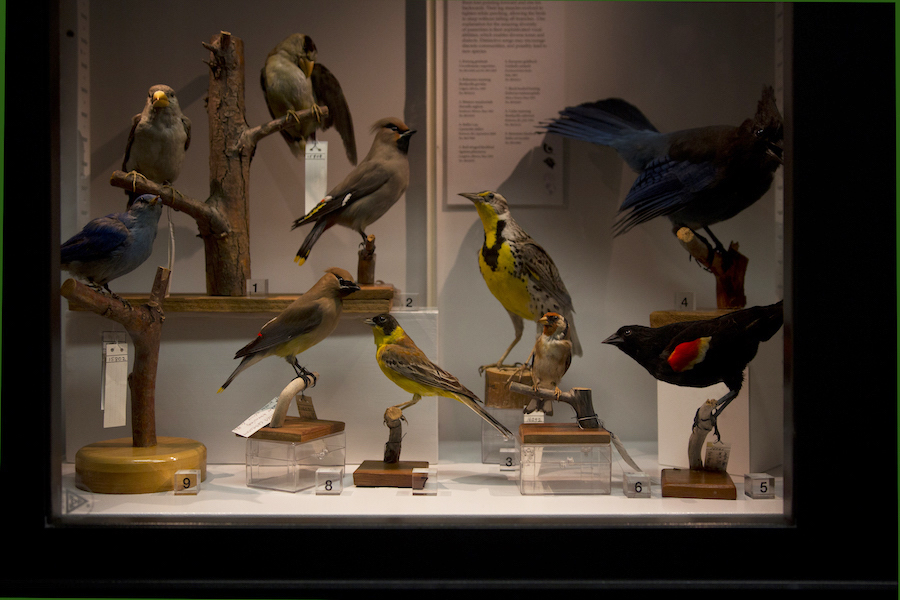
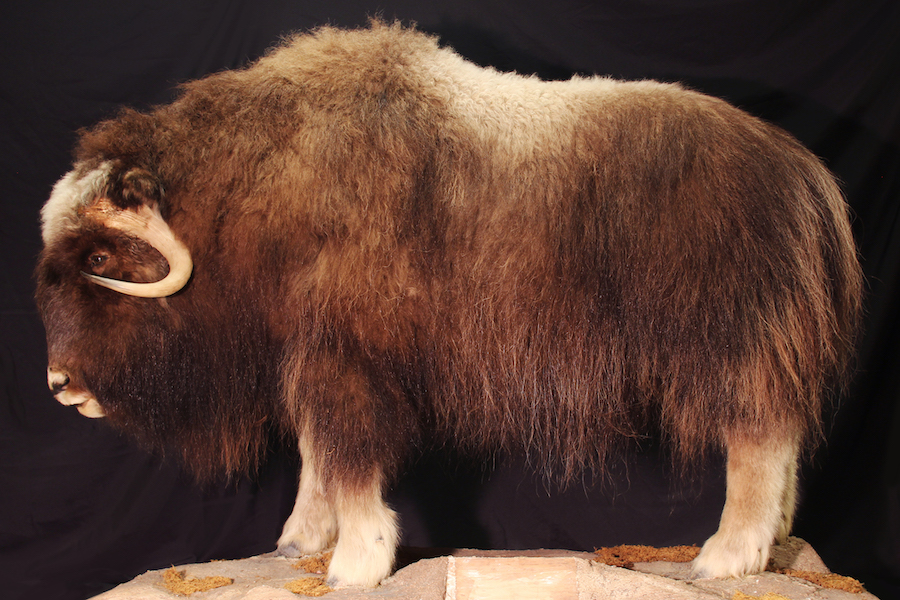
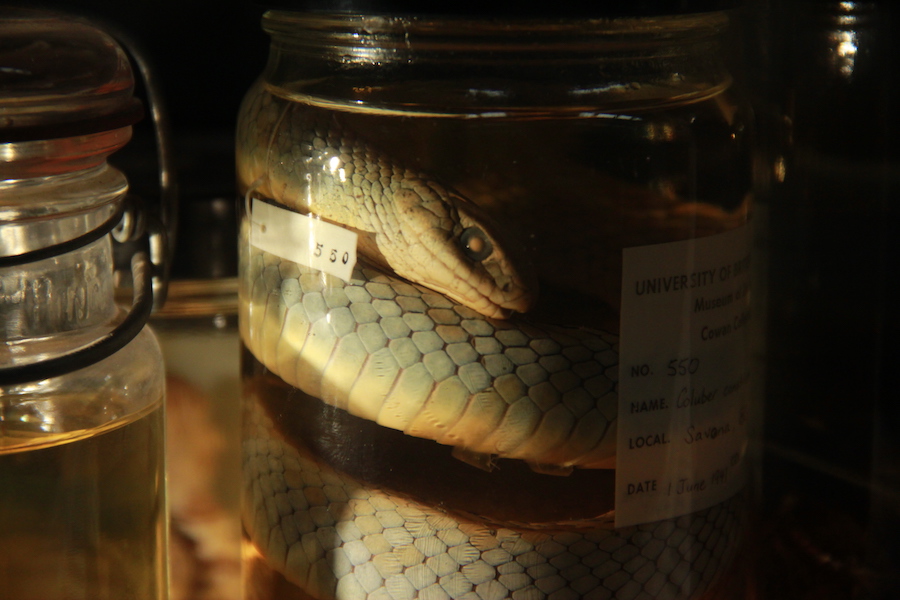
The Marine Invertebrate Collection contains thousands of specimens representing the major lineages of animals, such as cnidarians, molluscs, annelids, crustaceans, echinoderms, and sponges.
The Marine Invertebrate Collection is represented by the colour orange and an illustration of a shell throughout the museum. Enter this collection and look for a glass drawer top that is filled with shells that you can look at during this section of the tour.
My name is Sheila Byers and I am a Marine Biologist specializing in marine worms, called polychaetes, and I am one of the museum’s interpreters.
Marine invertebrates encompass the entire evolutionary tree of animals, except for land-dwelling arthropods, like insects and arachnids, and animals with backbones, such as fishes and tetrapods. There are many groups of animals in this collection, including sponges, sea jellies, marine worms, crustaceans, clams, octopuses, sea stars, other types of marine worms, and sea squirts. This collection is global in its focus, showcasing beautiful and diverse examples from our local shores and beyond.
Dr. C McLean Fraser and Dr. Ian MacTaggart-Cowan started the Marine Invertebrate collection in the 1940s with alcohol-preserved specimens that were primarily used for teaching. The collection eventually grew to several thousand specimens representing the major lineages of invertebrate animals.
In 2006, the Alice Stein collection of thousands of shells and corals was donated by Kelly Norton. The Marine Invertebrate Collection was further expanded in 2007 with a large donation of shells from Evelyn Hebb Killam. Both contributions represent mostly tropical species and include some spectacular examples of global marine biodiversity, such as giant clams and some rare species of cowries.
This display of shells you are looking at showcases organisms you can find in temperate areas like British Columbia, and tropical regions closer to the equator. It reminds us of the incredible beauty we can see at the seashore and how we can keep our oceans healthy. Healthy seas are teeming with life and diversity. Take a moment to observe the differences and similarities you see between these two regions.
Thank you for learning more about the Marine Invertebrate Collection. I hope you take the time to look through the many displays and drawers in this collection. While you’re visiting the museum, check out the art exhibits in the hallways, visit the other collections, talk to a volunteer, and touch a specimen. Think about how you fit into biodiversity, and what organisms are the most interesting to you. We hope that you will go home and help us create a world where biodiversity is better understood, valued, and protected.
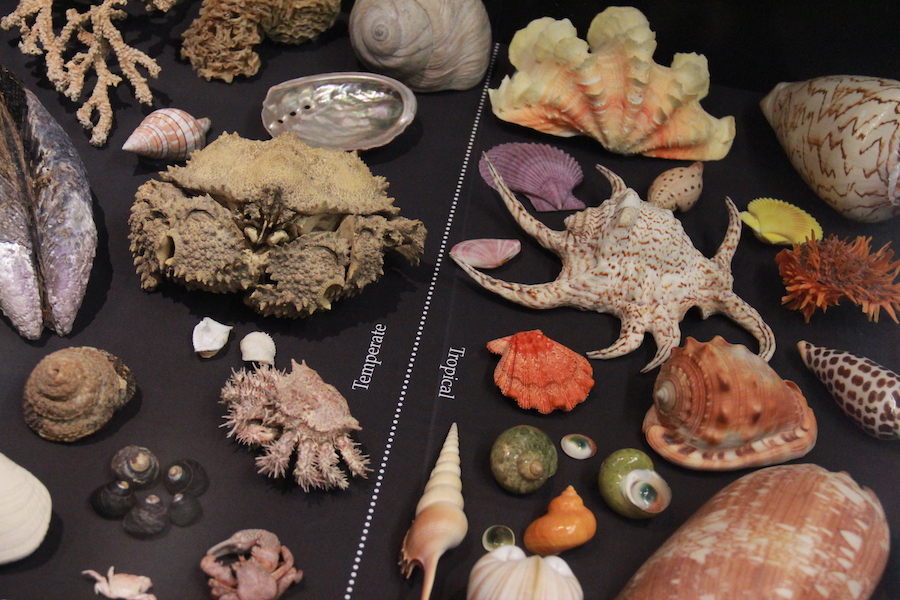
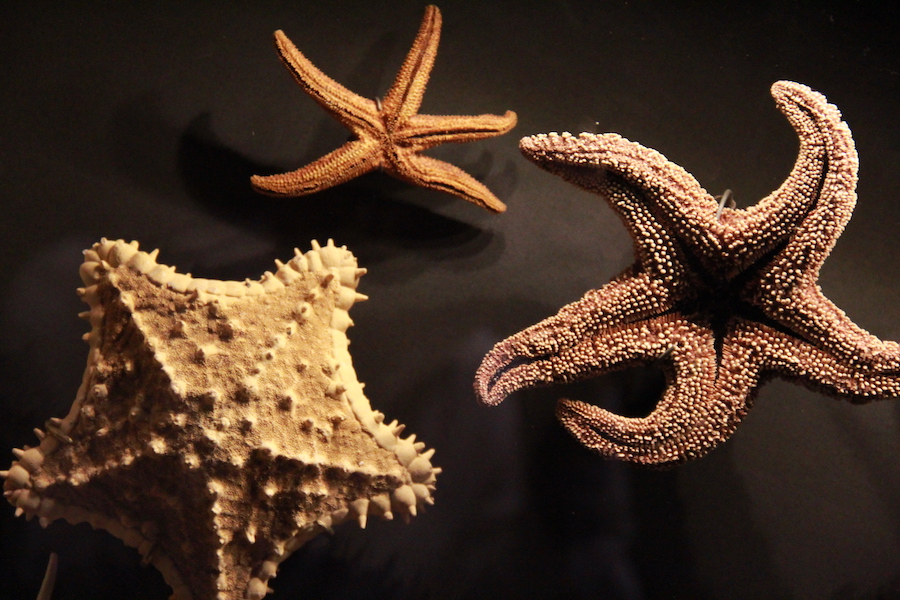
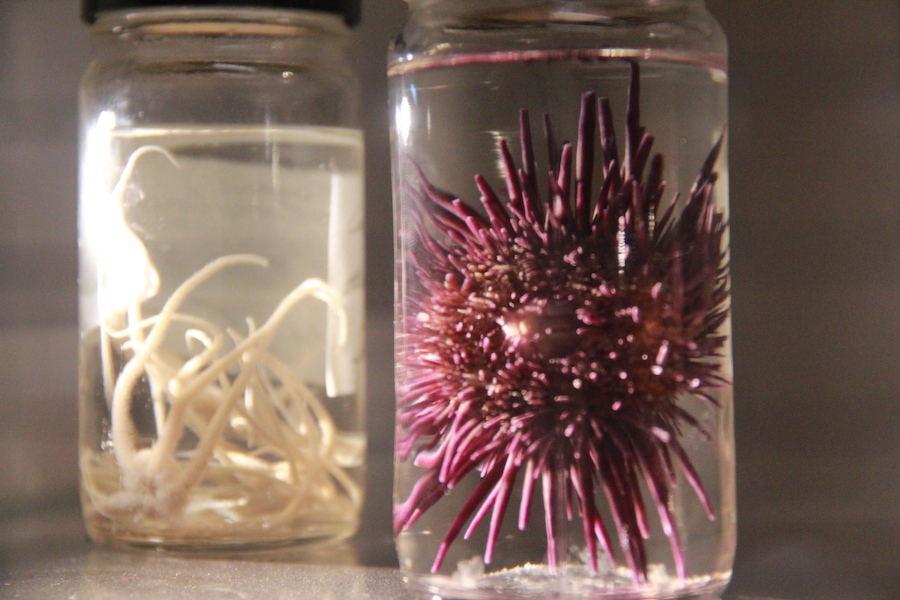
The Herbarium houses the largest collection of plants and fungi in western Canada, with more than 685,000 specimens. It is also world’s largest collection of BC plants and Canada’s largest collection of bryophytes.
Marked by the colour green and illustrations of a leaf, you should now be within the museum’s Herbarium. Take a moment to look around at the plants that are on display.
Hi, my name is Linda Jennings and I am the assistant curator of vascular plants and algae in the Herbarium.
A herbarium is a taxonomically and geographically organized collection of preserved plants, algae, lichens, and fungi. Herbarium collections traditionally include land plants, which are mosses, ferns, conifers, flowering plants, and their relatives. In the herbarium, we also find algae, lichens, and fungi, which aren’t plants at all! This odd assemblage represents older notions of the botanical world.
In 1912 the Herbarium was located on West Pender Street in downtown Vancouver and formed part of the provincial government’s Botanical Office. John Davidson, the Provincial Botanist at that time, negotiated its relocation to UBC in 1916. At over 100 years old, it is the oldest collection in our museum.
Today, it holds more than 700,000 specimens, some dating back as far as 1804, and is the third-largest herbarium in Canada. Botanical researchers refer to our specimens to help identify the plants and other organisms they work on, describe new species, and track changes in diversity in space and time. The specimens in the herbarium are also used to help train the next generation of botanists.
Specimens in this collection are dried and either pressed flat to be stored in file folders or placed in packets and stored in trays. Can you find the window that displays these folders?
Thank you for taking the time to learn more about the Herbarium. I hope you take time to look through the many displays and drawers in this collection. Filling more than nine rows, it takes up the most square-footage of the museum. While you’re visiting the museum, check out the art exhibits in the hallways, visit the other collections, talk to a volunteer, and touch a specimen. Think about how you fit into biodiversity, and what organisms are the most interesting to you. We hope that you will go home and help us create a world where biodiversity is better understood, valued, and protected.
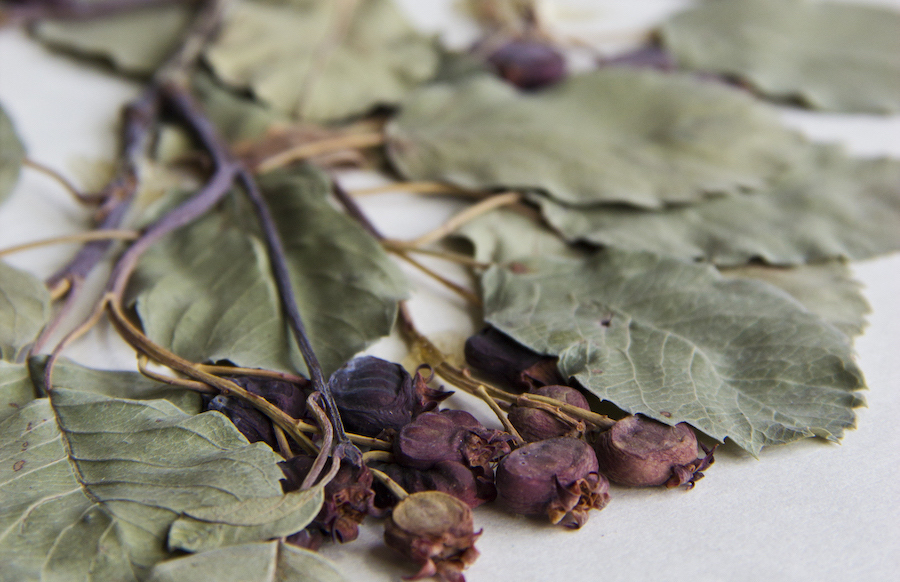
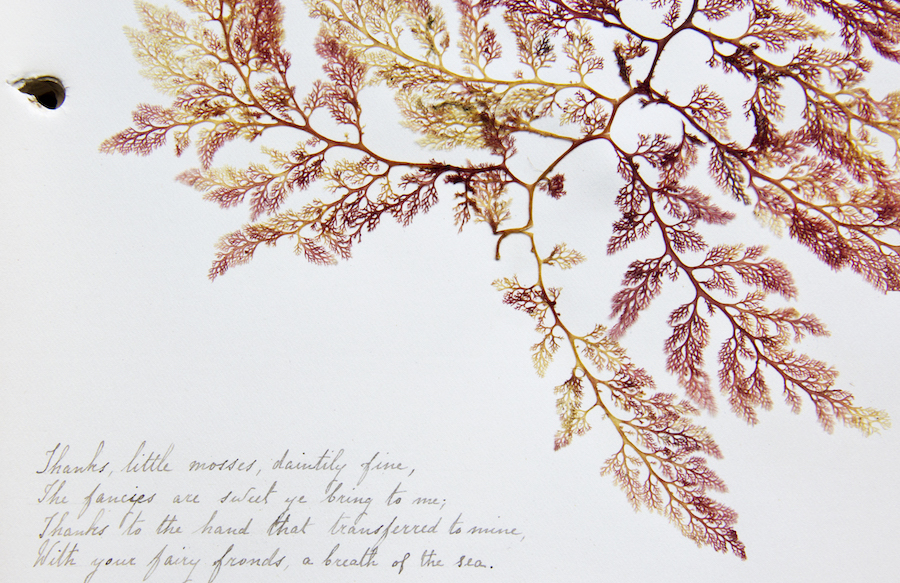
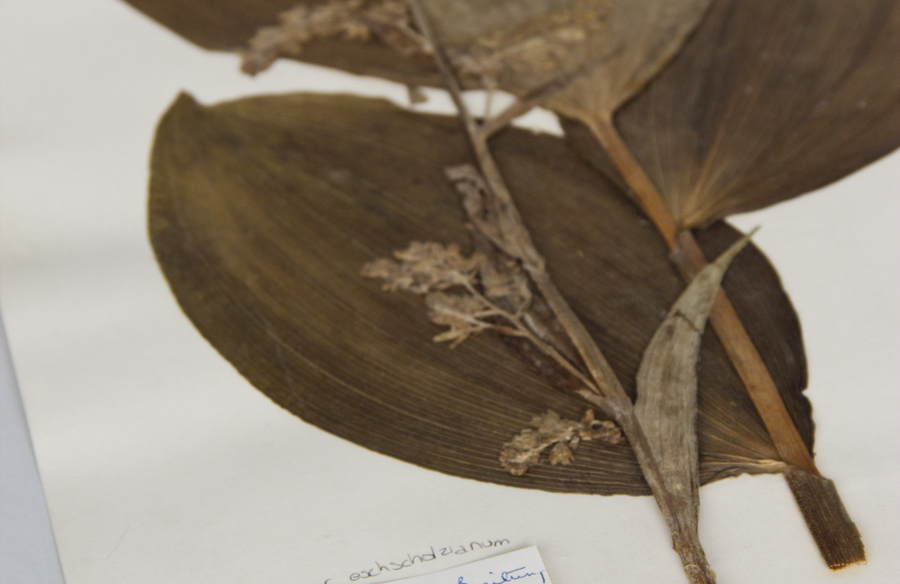
The Herbarium also contains the world’s largest research collection of BC fungi, including about a dozen type specimens, which scientists have used to describe new species.
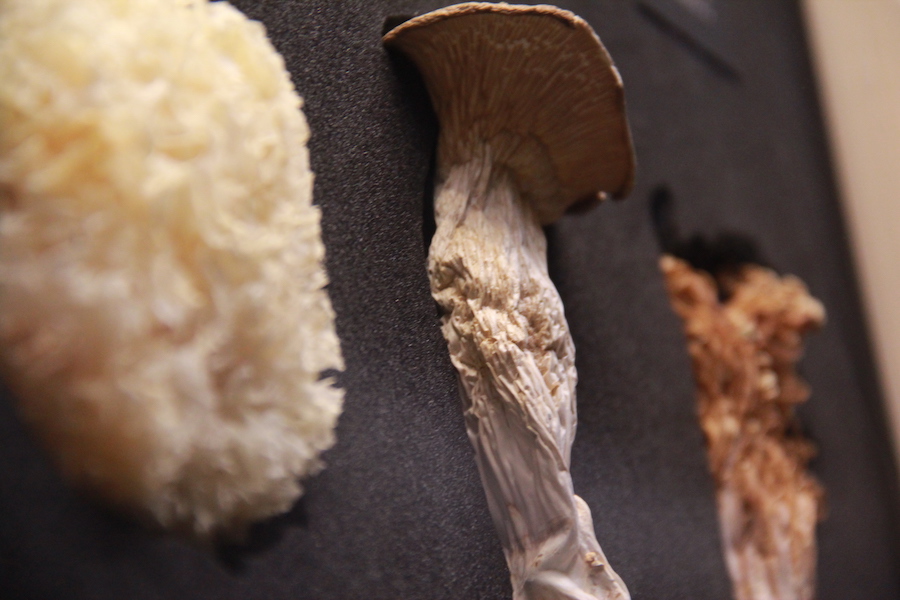
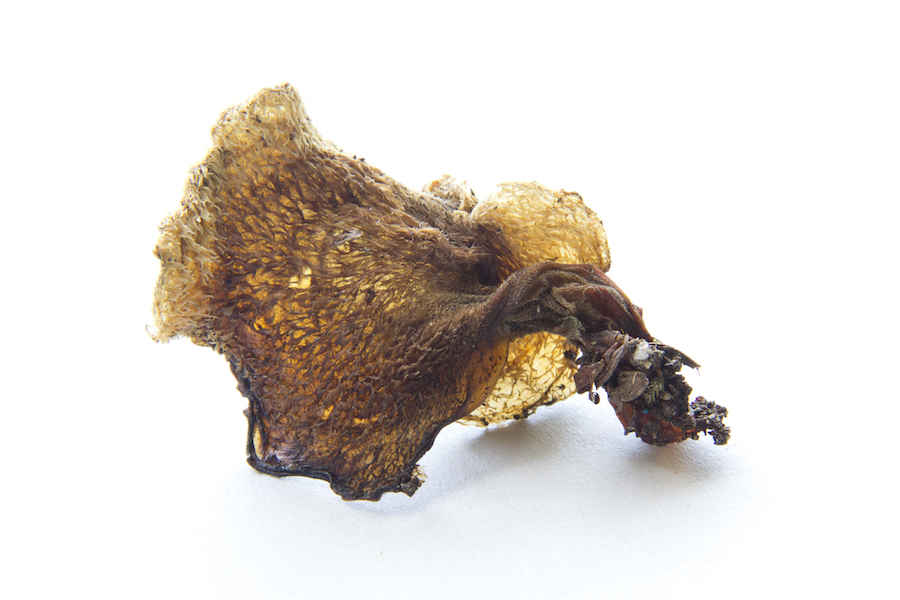
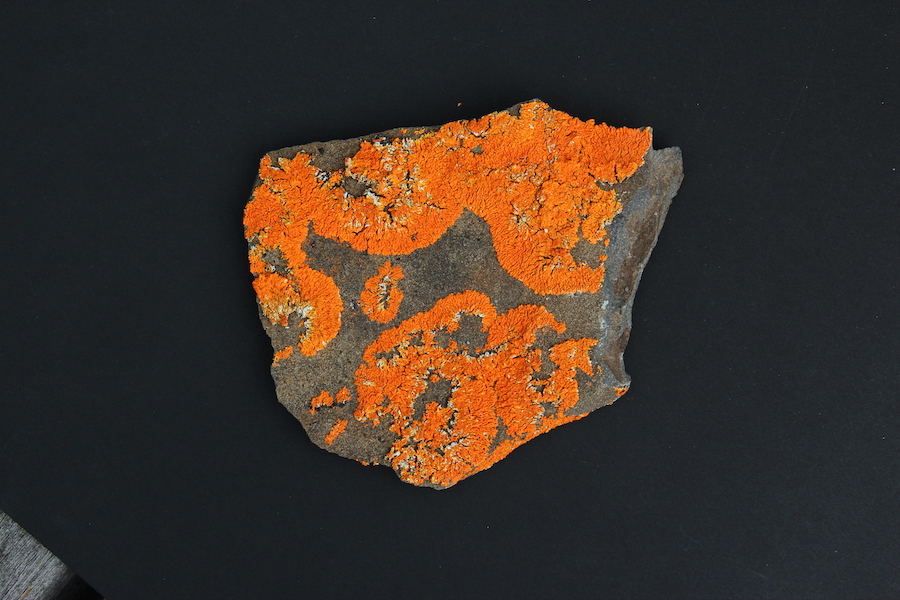
The Spencer Entomological Collection holds over 650,000 specimens that highlight the diversity of British Columbia’s insects and other arthropods, as well as jumping spiders from around the world.
The Spencer Entomological Collection is represented by the colour purple and an illustration of a butterfly. Find the glass drawer top with the black and white insect illustrations under the pink flower to look at during this part of the tour.
My name is Nancy Lee and I am a museum interpreter on the Education and Outreach team. Insects are a passion of mine and I am also a volunteer for this collection. I have participated in outreach activities, collected and identified insects, specializing in the flies, to contribute to this collection.
Entomology is the study of insects, and it can also include arachnids and other terrestrial invertebrates. The display you are looking at showcases different orders of insects in the museum. All of these organisms are arthropods, which are jointed-limbed animals with exoskeletons. You can find other arthropods on display in the Marine Invertebrate collection.
The Spencer Entomological Collection holds specimens from as far back as the 1830s. Dr. George J. Spencer began the collection in the 1920s, but it wasn’t formally established at UBC until 1953. By the time he left in 1958, the collection had grown to over 300,000 specimens. Dr. Geoffrey G.E. Scudder served as the collection’s director from 1958 to 1999, and greatly expanded the collection during his tenure. In 2003, Dr. Wayne Maddison became the collection’s director and enlarged the collection of jumping spiders into one of the world’s best through field work in tropical and temperate regions.
The collection today holds over 600,000 specimens and is the second-largest entomological collection in western Canada. It contains numerous holotype specimens, which are the original specimens that were used to describe new species. There are also many historical specimens of species that have unfortunately disappeared from the province, such as the viceroy butterfly, last collected in Lillooet in 1930.
Over half a million pinned specimens, 75,000 alcohol-preserved specimens, and 25,000 specimens on slides showcase BC and Yukon’s spectacular insect diversity. Past collectors’ research projects have shaped the collection and have resulted in particularly strong holdings of different taxonomical orders. Can you spot these in the display below? Look for the Hemiptera (or true bugs, in the far right centre) and Odonata (the dragonflies and damselflies, in the far right top corner).
Thank you learning more about the Spencer Entomology Collection. I hope you take some time to look at some of the other display windows during your visit. While you’re visiting the museum, check out the art exhibits in the hallways, visit the other collections, talk to a volunteer, and touch a specimen. Think about how you fit into biodiversity, and what organisms are the most interesting to you. We hope that you will go home and help us create a world where biodiversity is better understood, valued, and protected.
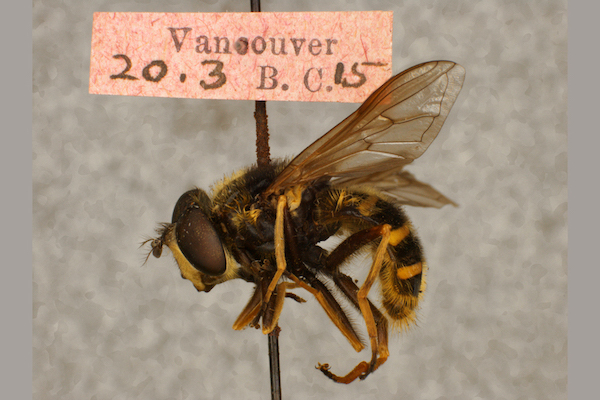
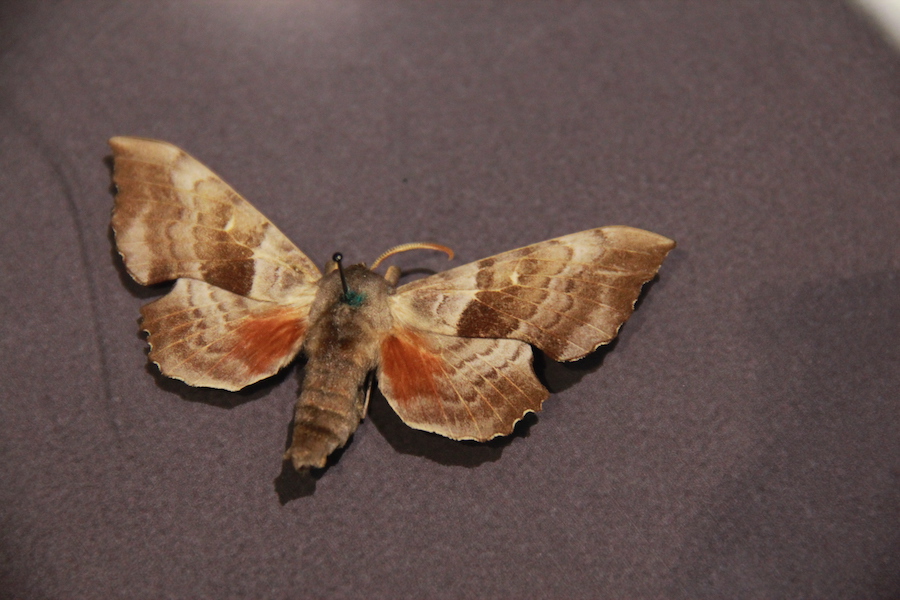
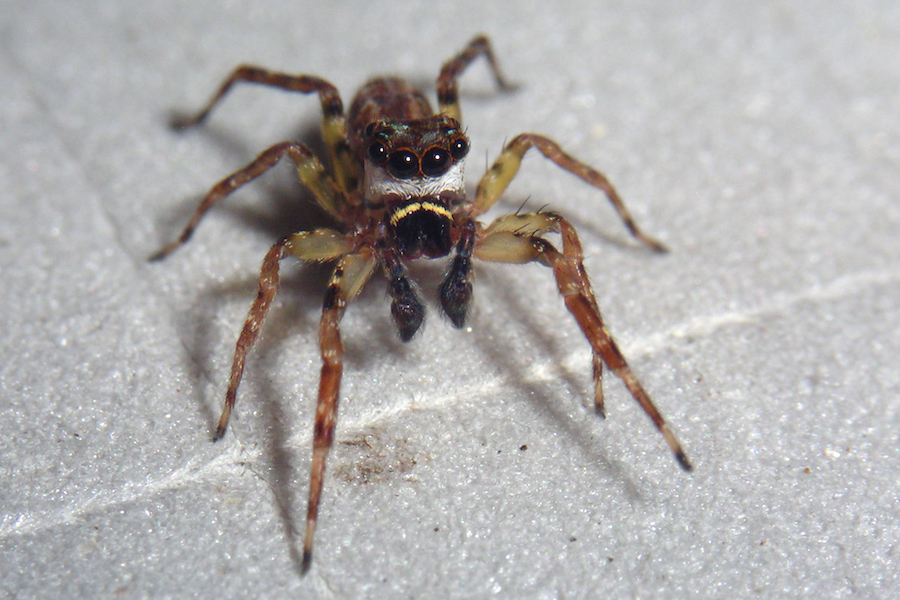
The Fish Collection boasts over 850,000 specimens, with particularly spectacular and important holdings from Canada, the Aleutians, the Malay Archipelago, Mexico, the Galapagos, Panama, and the Amazon.
Welcome to the Fish Collection, which is represented by an illustrated fish on a blue circle throughout the museum. Fishes are animals that live in water, breathe through gills, and have skeletons made of bone or cartilage. You can look at any interesting display of fish in jars for this section of the tour.
My name is Kashifa Hafeez and I am one of the museum’s interpreters.
Did you know that fishes are the oldest lineage of vertebrates and the most diverse of all vertebrates with over 35,000 described species?
The Fish Collection was started by Dr. C. McLean Fraser, the first head of UBC’s Department of Zoology. Some specimens date back as far as 1904, but cataloguing didn’t begin until 1945. Dr. Murray Newman was the collection’s first curator, and Dr. Wilbur Clemens, G.V.Wilby, Dr. Casimir Lindsey, Dr. Norman Wilimovsky, and Dr. J. Donald McPhail each expanded the collections greatly over the decades.
Today, the collection holds over 850,000 specimens and over 50,000 DNA and tissue samples, making it the third-largest fish collection in Canada and the largest collection in our museum. The collection holds 11 holotype specimens, which are original specimens that were used to describe new species. It also contains representatives of what may be the youngest fish species on Earth: pairs of stickleback species that evolved only recently in British Columbia’s lakes.
The collection has been used in environmental assessments, conservation efforts, and numerous research projects, as well as in educating and training some of Canada’s leading fish biologists. Its specimens have also been used to document rapid ecosystem changes in the Bering Sea, the formation of new species, and the extinction of others.
The fish you see in jars are generally preserved in alcohol. This allows the entire specimen to be preserved, including the internal organs and skeleton. This is useful for researchers as it allows them to see every part on the fish. Alcohol can degrade colour pigment over time, which results in the specimens fading from their natural appearance.
Thank you for taking the time to learn more about the Fish Collection. I hope you enjoy exploring our unique collection of fish in jars. While you’re visiting the museum, check out our art exhibits in the hallways, visit the other collections, talk to a volunteer, and touch a specimen. Think about how you fit into biodiversity, and what organisms are the most interesting to you. We hope that you will go home and help us create a world where biodiversity is better understood, valued, and protected.
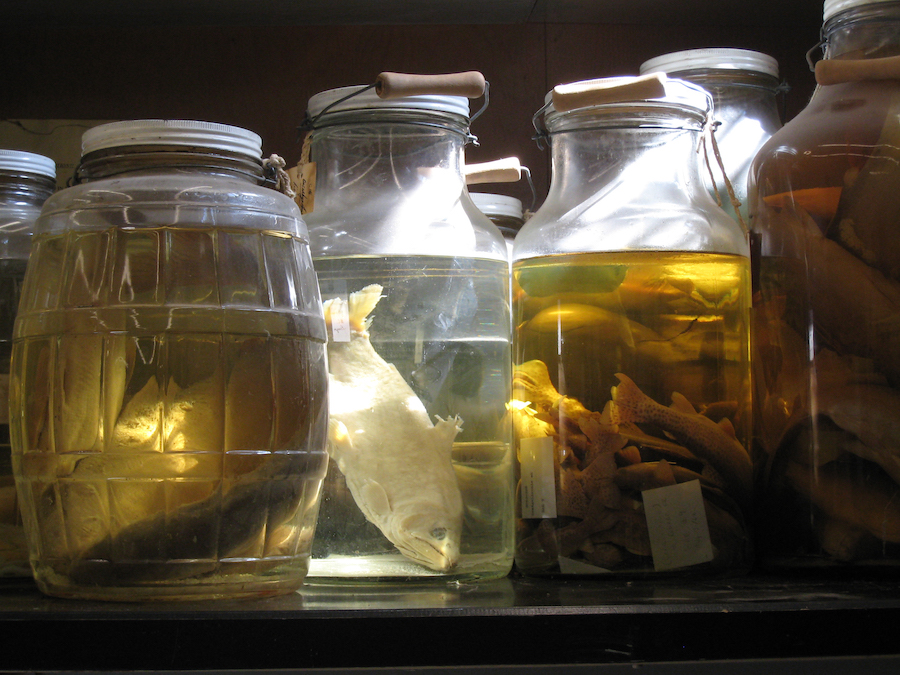
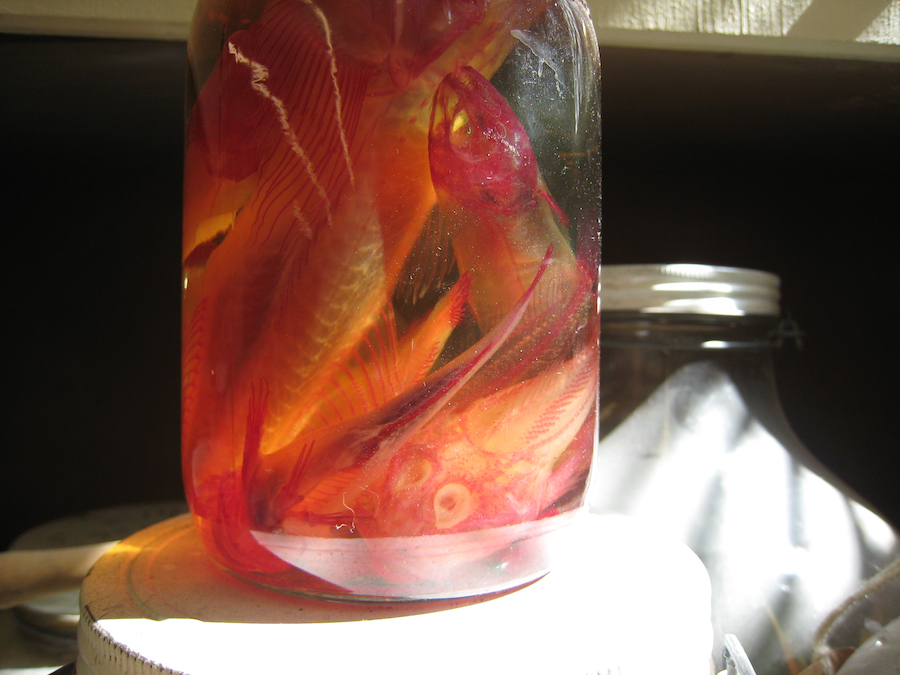
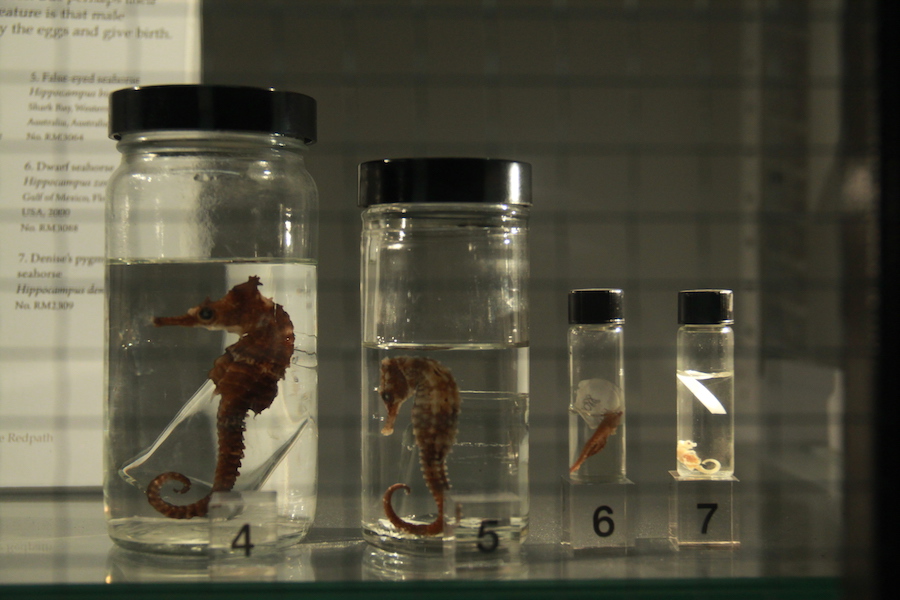
The Fossil Collection contains over 20,000 specimens that range from recent shells to 500-million-year old fossils of blue-green algae, as well as specimens from British Columbia’s famous Burgess Shale.
Welcome to the Fossil Collection, which is the last section of the museum, represented by the colour red and a trilobite illustration. Find the large dinosaur footprints that are hanging from our back wall.
I am Dr. Kirsten Hodge and I am the curator of the fossil collection and the director of UBC’s Pacific Museum of Earth.
Fossils are the remains or traces of organisms preserved from the past. The Fossil Collection was started in 1924 by Dr. Merton Yarwood Williams, who was a founding member of what was then UBC’s Department of Geology. The collection began with the purchase of specimens from W.J. Sutton, a local mining engineer. It expanded substantially in the 1970s and 80s with the curatorial efforts of Joe Nagel, curator from 1971 to 1995. Today, the Fossil Collection is part of the Pacific Museum of Earth, located within UBC’s Department of Earth, Ocean and Atmospheric Sciences.
The collection contains over 20,000 specimens, ranging from recent shells to traces of bacterial mats, called stromatolites, which represent some of the oldest evidence of life on Earth. The collection also includes specimens about 505 million years old from the famous Burgess Shale in eastern British Columbia, as well as many other fossil specimens from all over the world.
Some fossils are the remains of an organism’s body parts, like bones or shells, while others, like the dinosaur trackways, preserve evidence of an organism’s behaviour when it was alive. You can gently touch the trackways.
These were found near Tumbler Ridge and Sparwood, British Columbia. We present this exhibit in partnership with the Peace Region Palaeontology Research Centre. These are casts of the original trackways. We left the originals, which are preserved in stone, where they were initially discovered. This cast allows us to observe and study these trackways up close without having to travel far or risk damaging the original fossils.
There are four trackway types on display. On the left are footprints made by an armoured dinosaur. This fossil shows that the dinosaur had three toes. In the centre you will see two sets of large footprints, one moving from right to left, and the other moving from top to bottom. The footprint on the right was made by a small theropod. These dinosaurs are the prehistoric relatives to modern-day birds.
Thank you for taking the time to learn more about the Fossil Collection. Fossil collections provide a window into that worlds that have long since vanished. They are becoming increasingly important as they help us compare changes in biodiversity today to those in the past.
While you’re visiting the museum, check out the art exhibits in the hallways, visit the other collections, talk to a volunteer, and touch a specimen. Think about how you fit into biodiversity, and what organisms are the most interesting to you. We hope that you will go home and help us create a world where biodiversity is better understood, valued, and protected.
